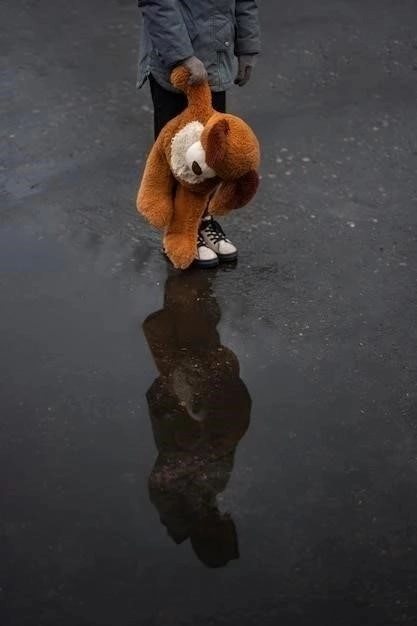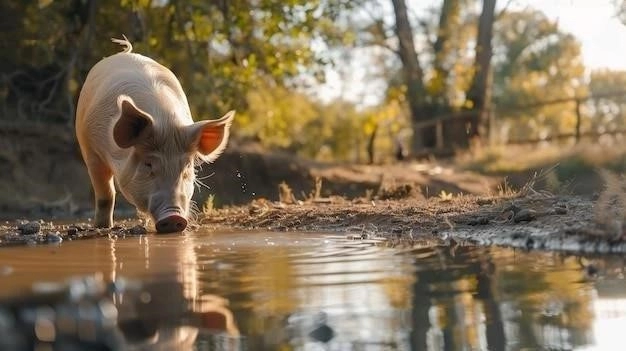As a nature enthusiast‚ Im endlessly fascinated by the incredible diversity of life on Earth. Recently‚ Ive become particularly captivated by the concept of endemic species – animals found exclusively in one specific location. These creatures‚ shaped by unique evolutionary pressures‚ are like living treasures‚ highlighting the irreplaceable biodiversity of our planet.
One memorable encounter I had with an endemic species was during a trip to Madagascar. I was lucky enough to observe the incredibly charismatic lemur‚ a primate found nowhere else on Earth. Watching these primates swing through the rainforest canopy was an unforgettable experience‚ and it solidified my fascination with endemic animals.
Why are there animals found only in one place?
Endemic species often arise due to geographical isolation. Islands‚ for example‚ often serve as evolutionary crucibles‚ where animals and plants evolve in isolation‚ resulting in unique adaptations and species found nowhere else.
Here are some factors that contribute to endemism⁚
- Geographical Isolation⁚ Physical barriers like oceans‚ mountains‚ and deserts can separate populations‚ preventing interbreeding and leading to the evolution of distinct species.
- Unique Habitats⁚ Specialized environments‚ such as caves‚ mountaintops‚ or specific types of forests‚ can harbor species adapted to those particular conditions.
- Climate and Environmental Factors⁚ Temperature‚ rainfall‚ and other climatic factors play a crucial role in shaping the distribution of species.
Why are endemic species important?
Endemic species are incredibly important for several reasons⁚
- Biodiversity⁚ They contribute significantly to the overall biodiversity of our planet. Each endemic species represents a unique lineage and a wealth of genetic information.
- Ecosystem Health⁚ Endemic species often play vital roles in their local ecosystems‚ contributing to pollination‚ seed dispersal‚ and maintaining a balance within the food web.
- Scientific Value⁚ Studying endemic species provides valuable insights into evolutionary processes and helps us understand how life adapts to different environments.
Threats to Endemic Species
Sadly‚ endemic species are particularly vulnerable to extinction due to their limited ranges and specialized adaptations.
Here are some major threats they face⁚
- Habitat Loss⁚ Deforestation‚ urbanization‚ and agricultural expansion are destroying the habitats that endemic species rely on for survival.
- Climate Change⁚ Shifting climate patterns can alter the delicate balance of ecosystems‚ making them unsuitable for endemic species.
- Invasive Species⁚ Introduced species can outcompete‚ prey on‚ or introduce diseases to endemic species‚ devastating their populations.
Conservation Efforts
Protecting endemic species is crucial for preserving the biodiversity of our planet. Conservation efforts often focus on habitat protection‚ captive breeding programs‚ and raising awareness about the importance of these unique creatures.
I believe that understanding and appreciating endemic species is essential for fostering a sense of responsibility towards our planets incredible biodiversity. By learning about these fascinating creatures and supporting conservation efforts‚ we can help ensure their survival for generations to come.
My Quest for the Elusive Quoll
My fascination with endemic species led me to plan a trip to Tasmania‚ an island off the coast of Australia known for its incredible biodiversity and unique wildlife. I was particularly determined to catch a glimpse of the Tasmanian devil‚ but it was another‚ more elusive creature that truly captured my heart – the eastern quoll.
I spent days hiking through Tasmanias stunning wilderness‚ guided by local experts who shared my passion for these rare animals. We trekked through dense forests‚ navigated rocky outcrops‚ and set up camera traps in hopes of capturing evidence of the quolls presence.
The eastern quoll‚ a small carnivorous marsupial with a spotted coat‚ has faced a devastating decline due to habitat loss and the introduction of invasive species. Seeing one in the wild felt like finding a needle in a haystack‚ but I was determined to persevere.
One cool evening‚ as the sun began to set‚ casting long shadows across the forest floor‚ our persistence paid off. There‚ perched on a fallen log‚ was an eastern quoll. Its sleek‚ spotted fur and bright eyes shone in the fading light. I watched‚ captivated‚ as it moved with surprising agility‚ its every sense alert to the sights and sounds of the forest.
That moment‚ witnessing the beauty and resilience of this endangered creature in its natural habitat‚ was nothing short of magical. It reinforced my belief in the importance of protecting these unique and irreplaceable animals.

Lessons from the Field
My experiences have taught me that encountering endemic species isnt just about ticking off a checklist; its about connecting with the natural world on a deeper level. Its about appreciating the delicate balance of ecosystems and recognizing our responsibility to protect them.
I believe that sharing these personal stories is crucial for inspiring others to care about conservation. When we connect with nature on a personal level‚ were more likely to become advocates for its protection.
After my Tasmanian adventure‚ my thirst for encountering unique wildlife led me to the Tibetan Plateau. Id always been drawn to the stark beauty and challenging conditions of this region‚ and I was determined to witness firsthand the Tibetan antelope‚ a creature uniquely adapted to this extreme environment.
I joined a small expedition team‚ led by a seasoned Tibetan guide named Tenzin. We set off on horseback‚ our path winding through vast‚ windswept grasslands dotted with prayer flags fluttering in the breeze. The air was thin and crisp‚ and the silence was broken only by the sound of our horses hooves and the occasional cry of a distant bird.
The Tibetan antelope‚ also known as the chiru‚ is famous for its remarkable wool‚ which is warmer and softer than cashmere. Sadly‚ this prized wool has also made them a target for poachers‚ pushing them towards the brink of extinction.
Days turned into weeks as we traversed the high-altitude plains‚ encountering nomadic herders and their yaks along the way. Tenzin shared his knowledge of the land and its wildlife‚ his stories filled with respect and a deep understanding of the delicate balance of life on the plateau.
Finally‚ after what felt like an eternity‚ we spotted them. A herd of chiru grazed peacefully in the distance‚ their white coats blending seamlessly with the snow-dusted landscape. As we approached cautiously‚ I was struck by their grace and agility‚ their movements perfectly adapted to the thin air and rugged terrain.
We watched in awe as they grazed‚ their large‚ dark eyes scanning the horizon for danger. I felt an overwhelming sense of privilege to witness these creatures in their natural habitat‚ a stark reminder of the beauty and fragility of life on Earth.

A Shared Responsibility
My encounters with the eastern quoll and the Tibetan antelope have been life-changing experiences. Theyve instilled in me a deeper appreciation for the interconnectedness of all living things and the urgent need to protect our planets biodiversity.
These animals‚ confined to their unique corners of the world‚ serve as powerful reminders that conservation isnt just about saving species; its about preserving the intricate web of life that sustains us all. Its about recognizing that we have a shared responsibility to protect these creatures and the habitats they depend on‚ not just for their sake‚ but for our own.
The crisp mountain air seemed to amplify every sound‚ every thought. As I watched the chiru disappear into the vastness of the Tibetan Plateau‚ I knew this journey had ignited a spark in me‚ a desire to seek out more of Earth’s hidden wonders‚ those creatures found only in the most extraordinary of places.
My travels next took me to the humid‚ vibrant rainforests of Madagascar‚ a land teeming with life unlike anywhere else on Earth. I was captivated by the sifakas‚ lemurs with striking orange crests‚ leaping effortlessly through the canopy; Their calls‚ a haunting chorus‚ echoed through the trees‚ a constant reminder of the unique symphony of life in this biodiversity hotspot.
I spent hours tracking indris‚ the largest of the lemurs‚ their black and white fur blending into the dappled sunlight filtering through the leaves. Hearing their eerie‚ whale-like calls sent shivers down my spine‚ a testament to the ancient origins of this isolated ecosystem.
But it was the smallest of creatures‚ the panther chameleon‚ that stole my breath away. I discovered one perched on a branch‚ its emerald green skin shimmering with iridescent flecks. As I watched‚ it slowly rotated its independently moving eyes‚ a surreal adaptation to its world. The panther chameleon‚ confined to this island haven‚ epitomized the delicate beauty and irreplaceable nature of endemic species.
Each journey‚ each encounter‚ has deepened my connection to the natural world. I’ve come to realize that these creatures‚ often overlooked and underappreciated‚ are the threads that weave the intricate tapestry of life on Earth. Their survival is intertwined with our own‚ and their loss would diminish us all.
I’ve made it my mission to share their stories‚ to inspire others to recognize the value of these unique and irreplaceable animals. I believe that through education‚ awareness‚ and a shared sense of responsibility‚ we can protect these hidden wonders‚ not just for ourselves‚ but for generations to come.











Your article highlights the importance of protecting not just individual species, but entire ecosystems. Endemic species are often intricately connected to their surroundings.
The concept of “evolutionary crucibles” is so intriguing! It makes sense that islands, with their isolation, would be hotspots for endemic species. Your description of Madagascar makes me want to visit and witness the unique wildlife firsthand.
Your article is a call to action! We need to protect these unique and irreplaceable creatures before it\
The connection between endemic species and ecosystem health is crucial. They are often keystone species that play vital roles in their environments.
I recently learned about the Galapagos Islands and their incredible array of endemic species. It\
Your passion for endemic species is contagious! I\
I never fully grasped the significance of endemic species until now. They truly are “living treasures” that deserve our protection.
Your article is a great reminder of the interconnectedness of life on Earth. Endemic species are not just isolated creatures; they are vital parts of their ecosystems.
Your article is a great reminder of the incredible biodiversity that exists on our planet. We need to do everything we can to protect it.
I\
The concept of endemic species is new to me, but I\
The concept of “evolutionary crucibles” is mind-blowing! It makes me appreciate the power of nature and the incredible diversity it has produced.
The diversity of life on Earth never ceases to amaze me. Endemic species are a testament to the incredible variety that evolution can produce.
Your article has sparked my interest in learning more about the endemic species in my own region. I had no idea such unique creatures might exist so close to home!
I love how you describe endemic species as “like living treasures.” They truly are precious and irreplaceable.